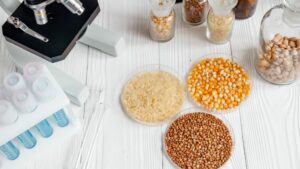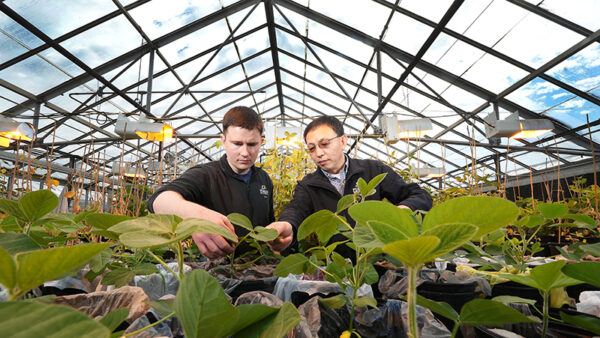Industry survey examines variation in seed test results from seed testing laboratories.
The overall level of seed testing uniformity depends upon what aspects of testing are measured, which crops are being tested and maybe even who you ask. The simpler the test being performed and the easier the crop being tested, the test results will generally display less variation. Conversely, the more challenging the crop, e.g., native species with seed dormancy and the more complex the test, e.g., TZ viability test, the less uniformity there is likely to be among multiple tests.
“Uniformity has been a challenge in seed testing ever since seed testing started in the late 1800s. It gets to be a real challenge because even if everybody follows all the current standardized methods, there is natural variation when dealing with seed, a living entity,” says David Johnston, president, Association of Official Seed Analysts (AOSA). “Take, for example, the germination test. It is a snapshot in time. Seed is not static; it is a dynamic commodity. It is always changing to some degree.”
Start with the Sample
The results from a seed testing lab are only as reliable as the sample submitted for testing. If the sample is not an adequate representation of the entire lot of seed, neither will the lab results be representative of the quality of the seed lot. It is important that the sampler follow government and seed industry official sampling protocols established by AASCO or other governmental organizations.”
It is also important to provide as much information as possible to the laboratory when submitting the sample for testing.
Heidi Larson, president of the Society for Commercial Seed Technologists (SCST), notes dormancy changes as the seed ages. “Some species have dormancy requirements that are needed only right after harvest. Winter wheat, for example, has short-lived dormancy. These freshly harvested seeds need to be exposed to cold temperatures to break that short-lived dormancy. If a lab does not know that the seed is freshly harvested seed, the sample may not get the necessary prechill and germination results could be a lot lower than expected.”
Seed regulators started to notice, over time, that some lab reports associated with seed labels appeared to have a higher rate of “out of tolerance” test results. but nobody was keeping a record. “There was no master record of out-of-tolerance tests,” recalls Jason Goltz, president of the Association of American Seed Control Officials (AASCO). “At the 2019 AASCO Annual Meeting, we had a facilitated discussion and decided to do a study to see if there was an actual pattern of out-of-tolerance results, or were the claims merely anecdotal? We found that some labs are out of tolerance more than others. The next question was, ‘Why?'”
Variability in Seed Testing Survey
The topic of seed lab uniformity has been a point of discussion for many years, but it was always anecdotal. At the AASCO 2019 annual meeting, the organization passed a resolution to conduct a formal study to assess the extent of variability in seed testing. Designated as the Variation in Purity, Viability and Foreign Seed Results Among Seed Testing Laboratories, the survey was launched in late 2019.
“The opportunity for a partnership with the state seed control officials in a project such as this allowed the resulting data to be used to move the discussions to the next level, between industry, labs, and regulatory officials,” says Pat Miller, the American Seed Trade Association (ASTA)’s director of state affairs. “In any process, I believe there is always room for improvements, innovations and efficiencies. I hesitate to speculate on the outcomes, but I am certain this survey will generate positive action for everyone involved in the seed industry, including our seed customers.”
ASTA and AASCO cooperated to select 12 seed testing labs that offer services for a fee to seed producers and to the public. Corporate labs that test only their own seed were not included. ASTA members donated seed and paid for the seed testing. ASTA and AASCO provided additional financial support for the survey.
Nine seed lots received from ASTA members were used in the study: Big bluestem (Andropogon gerardi Vitman), German (Italian) millet (Setaria italica subsp. Italica), Indiangrass (Sorghastrum spp.), Kentucky bluegrass (Poa pratensis L.), oat (Avena sativa L.), Pearl millet [Cenchrus americanus (L.) Morrone], Purple prairieclover (Dalea purpurea Vent.), rye (Secale cereale L. subsp. Cereale) and wheat (Triticum aestivum L.).
Each of the nine seed samples was divided into 13 subsamples according to Association of Official Seed Analysts (AOSA)Seed Testing rules. Samples sent for testing were “spiked” with a known quantity of selected weed seeds and other crop seed contaminants. One subsample of each species, held for future reference, was carefully examined for purity and foreign seed to establish a baseline. A subsample for each species was submitted to the seed testing labs without the purpose of the test being revealed (blind testing).
Seed labs tested the seed samples to obtain the required seed label information. The labs returned test reports to the respective seed companies. Tetrazolium (TZ) dormancy tests were performed on three species: Indiangrass, purple prairie clover and big bluestem.
Natives, PLS and TZ tests
Denise Thiede, manager of the Seed, Noxious weed, Hemp, and Biotechology programs of the Minnesota Department of Agriculture, says native seeds, as well as other seed with a significant amount of dormant or hard seeds, is sold based on pure live seed (PLS). The value of a seed lot is determined by the amount of PLS is calculated from a TZ test score. “Determining seed viability using triphenyl tetrazolium chloride (TZ test) is not a simple, black and white test. Viability determination via TZ analysis requires an analyst to evaluate a seemingly infinite array of pink stains before deciding whether a seed is alive and respiring or dead.”
“There are specific guidelines in AOSA rules about plant and root structures and what constitutes normal and abnormal plants,” says Goltz. “And yet, some of these testing companies are consistently giving higher germination scores for samples with dormant seeds. So why is that? We have seen the trend; now we have to figure out why.”
The accuracy of TZ test results is very dependent on the expertise of the analyst and their level of familiarity with the morphology of the embryo structure of the seed kind being tested.
Goltz believes a large part of seed control official’s work is education.
“When I run into a regulatory violation, it comes down to intent. 1) Did the individual or company understand they were violating the law? If No, then it is an education problem. If yes, then it is an ethical issue. If a seed lab comes to the top more often because it is out of tolerance more than others, the question becomes, Is this a proficiency issue? Or is it more along the ethical lines? We don‚Äôt know. That’s going to be the next step from our perspective. Why is this happening? I think that is where AOSA and SCST are currently working.”
The variation among labs was higher than the survey organizers expected, particularly for identifying small grass species. As a group, labs showed significant differences from labeled values. TZ test results were also widely varied, with differences among labs for the same tested species ranging as high as 60%. In addition to wide variations in TZ test results, viability results based on germination were frequently inconsistent with TZ-derived viability.
Noxious Weed Seed Violations
An analysis that is often even more critical than TZ testing is finding and identifying noxious weed seed contamination. If a regulatory inspection identifies a seed sample and finds a seed listed on a Noxious Weed List, a stop-sale order may be placed on the entire lot.
“From a regulatory perspective, identifying noxious weeds is extremely important,” says Thiede. “In our efforts to keep palmer amaranth out of Minnesota, it is critical that we know that analysts are finding and IDing palmer amaranth seeds. We never dreamed that labs participating in this study would not find and ID. Palmer or and other noxious species seeds. Most of the 12 labs missed or misidentified at least one noxious weed species. To me, this was the most troubling aspect of what we found. This is not for lack of rules, but for lack of education and experience. Experience matters a lot, but expertise with the seed kind being tested is even more critical especially in grasses. I would like to have seed analysts‚Äô experience records be more transparent to seed companies.”
An analyst can have a lot of experience with seed testing in general, but some seed kinds require much more expertise than experience. 
Concluding Observations
Overall, purity analysis results (percentage purity, inert, weed and other crops) were consistent among labs. In general, all 12 labs adhered to testing and reporting AOSA Rules and guidance. However, confusing information and many ambiguities were observed. While the labs were partially to blame for such irregularities, the survey organizers report existing Rules probably significantly contributed to these irregularities. When multiple methods are permitted, the method used in the test needs to be specified. Different methods can legitimately arrive at different results.
Report formats are not consistent which makes it difficult to understand and compare results from various labs. There is a need for more comprehensive and more consistent reporting of test results and procedures. This is especially true for tests such as TZ and germination testing for which multiple methods are allowed under AOSA rules. Total viability results indicated wide variability.
Analysis of variance indicates significant effects of labs on viability results. It should also be recognized that collecting data from a study requires a higher level of precision in reporting, which should not be expected in a blind study.
Numerous inconsistencies, deviations, ambiguities and a lack of updated information relating to the implementation of the AOSA Rules were observed. Most of these were misclassifications of detected foreign seeds in either the noxious or purity exam. Whether the labs involved in this study are representative of the general lab population is unknown.
The Timeline Starts Over Now
Encouraging and improving seed testing uniformity across all seed testing labs has always been and will always be a top priority for AOSA and SCST. Even when all aspects of seed sampling and seed testing are “done by the book,” there will always be occasions where test results will vary significantly. But overall, when considering the volume of seed lots tested in the United States every year, and the vast number of seed kinds tested, seed testing uniformity across AOSA and SCST member labs is generally considered to be pretty good.
For the seed testing system to work, everyone involved, including seed buyers, sellers, marketers and seed testing labs, needs to be committed to a partnership to work on these issues. The seed industry has helped create inconsistency problem by its willingness to send samples to a lab to get results favorable to their position as buyer or seller.
Each organization involved in the blind study is taking steps toward making improvements. AOSA and SCST have formed a joint task force to identify four key areas needing improvement were identified: Purity and contaminants, Germination, TZ testing, and lab reports. Working groups have been formed for each of those areas from volunteers within the organization. The best way to change is from the inside out. These working groups are currently meeting to identify the problems for each category, what potentially could have gone wrong and the best way to fix the situation. Recommendations for training will be coming forward from these working groups.
Reports of Analysis need to be made consistent nationwide in what and how information is presented. Many lab reports in the study were missing critical info. Inconsistent formats make it more difficult for customers to understand and compare results.
There is a need for more comprehensive and more consistent reporting of test results and procedures. This is especially true for tests such as TZ and germination testing for which multiple methods are allowed under AOSA rules. When various methods are permitted, the method used in the test needs to be specified. Different methods can legitimately arrive at different results.
“Other studies would have been easier to do, but this study gives the industry and AOSA and SCST enough information so they can move forward to identify what is really going on and then bring them back into compliance,” says Goltz. “Going out there with a “getcha” attitude is the last thing we want to do. As a regulatory association, we collaborated with the study and turned that information over to the Associations. Now we wait to see what happens. If the Associations want us to get more involved, we are certainly willing to help. But we are not there to monitor or take over. We are not there with a heavy hand. This will probably be a topic of discussion at several annual meetings for all of us. It is going to take time. One of the issues is that we have been having hallway conversations for a long time. Regulators and industry have both noticed this problem.”
Working groups cannot do it alone. AASCO needs to take an active role in working with SCST and AOSA. The seed industry needs to come together to devise a way to deal with outlier labs. Labs need to understand that the industry knows about this problem and is working to do something about it. There is a renewed, top-down commitment for labs to be neither a buyer’s nor seller’s lab but to strive for accuracy, integrity and honesty for everyone.
“The timeline begins now. This survey is the first time anybody has analytically looked at seed test variability,” concludes Goltz. “We have never had this information laid out like this before. This data will allow us to make better decisions. There is a certain amount of frustration among seed labs, seed companies and seed customers. We have to be patient. The timeline starts over now.”













